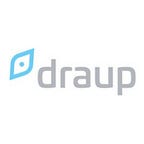How Service Providers can target new prospects with Cost Modelling Insights
Understanding the financial aspect of every deal or business activity still appears to be one of the major concerns of every business. Service providers can leverage Cost Modelling to understand the costs of setting up a new center or center expansion in a specific location based on required capabilities and team sizes.
It is crucial to determine the budget allocation to hiring costs during center setup or expansion. This can only happen if the company has access to in-depth insights about a location’s various hiring parameters, including pay scales, talent availability, and more.
Draup’s proprietary Cost Modelling tool helps sales executives identify the areas which are more feasible to outsource rather than building in-house capacity.
Benefits of Cost Modelling
Cost Modelling helps estimate the total talent base pay for hiring multiple roles in a location. It also deep dives into the experience level suiting for the cost analysis, the difference in cost across job clusters, and different company levels. Cost Modelling unlocks the following insights –
- Base pay estimate — This indicates the cost of hiring the selected job role from the location.
- Experience level — This showcases the best experience level for the total base pay estimate.
- Different job clusters — This section includes a graphical representation of how the base pay differs among other job clusters.
- Peer intelligence — This section enlists the market leaders of the selected location and how they are paying the job roles.
- Location intelligence — This section showcases the global locations and the base pay difference in each location
This article explores how service providers can use Cost Modelling as a tool to prospect.
Providing relevant talent insights with accuracy
Chances are your target prospect is planning to expand into a new office in a new location and requires relevant talent in the area to execute the complete plan.
Some of the challenges to be encountered during the process will include:
- Minimal insights about the cost of talent in that area.
- Lack of understanding about the specific talent needs.
- Lack of clarity about short-term or long-term requirements.
These challenges are extremely common in new expansions, and this is where a service provider comes into the picture.
Generally, enterprises spend a fortune on new expansions, and if they fail to hire the best, the expansion will not be fruitful for them. A service provider with access to the Cost Modelling tool can help their prospects with a number of services including, but not limited to:
- Extracting and delivering data-backed cost insights to the prospect, making it easier for them to understand the costing part of the new expansion.
- Balancing the need of the project with estimated hires to bring clarity about specific talent needs.
- Comparing in-house talent costs with outsourcing to serve short-term or long-term requirements.
By doing this, a service provider is not only helping a prospect be economical but also congruent to the current talent ecosystem.
Landing outsourcing deals
Sometimes, your prospect might be hunting for long-term talent when the requirement is short-term or only project-based, which would cost significantly less. For a service provider, any short-term or project-based need automatically turns into an opportunity.
For example, an app development company wants to add a simple VR mode into an app and needs just one AR/VR engineer. In such a case, hiring an entire team of this talent group wouldn’t be the ideal way forward. Hence, a service provider can help them with the relevant talent through an outsourcing deal.
This way, a service provider can help their prospect take full advantage of their talent at a minimal cost. This further builds the trust between the partners, making room for more outsourcing deals in the coming future.
Location and talent needs come in handy
Providing accurate cost models is one part of the Cost Modelling tool, but adding location and talent needs in terms of skillsets and experience can drastically power the expansion.
A service provider can help their prospects with:
- Understanding the base pay across global locations and picking the right one.
- Helping them choose between local talent and remote talent from a different location to reduce costs.
- Understanding the experience level of candidates and suiting base pay for them.
- Diving deep into a job role to analyze its effectiveness in the project.
A good expansion or a project requires all bases to be covered, including costs, location, and quality talent. The Cost Modelling tool helps cover each aspect independently.
Sales intelligence platforms such as Draup are helping Fortune 500 enterprises scale their sales efforts and empower their sales representatives with AI-driven insights, account intelligence, peer intelligence, and more.
With Draup, your sales team can map out each phase of the sales process, identify areas with gaps and inefficiencies, and recommend which technology works the best to boost sales and enhance the customer-client relationship.
